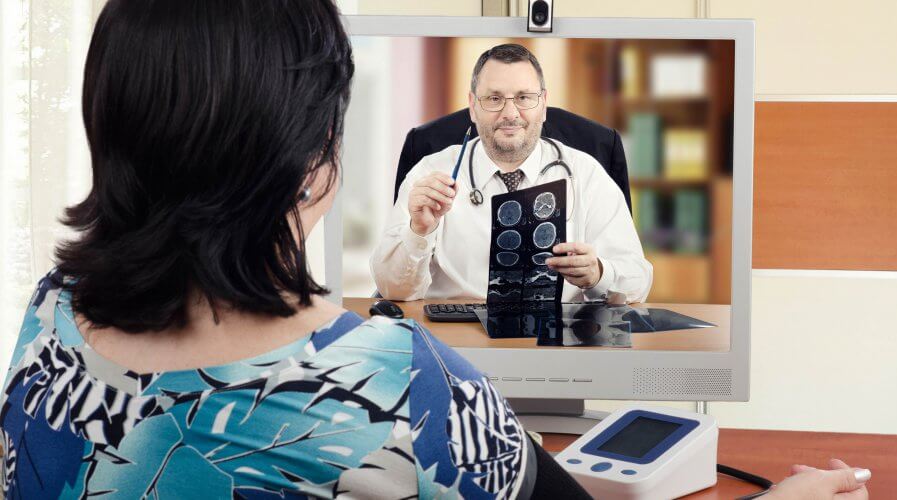
Telehealth providers allow patients to connect with doctors via video call, phone call or texting. Source: Shutterstock
Have telehealth platforms figured out the winning formula in SEA?
DEVELOPMENTS in technology and robust internet connectivity have made telehealth a viable option for increased access to healthcare in parts of the world where visiting a doctor is a challenge.
Perhaps due to minimal needs, lack of understanding of the concept, or an absence of value as a standalone service, on-demand medical consultation platforms are slow to gain traction, especially in Southeast Asia.
However, that seems to be changing. Ride-hailing turned superapp aspirant Go-Jek recently announced a partnership with Singapore-based telehealth provider Doctor Anywhere that will allow its drivers to access online medical service.
The service will be among the benefits that Go-Jek’s driving partners enjoy for free starting next month.
“The platform will enable drivers to video consult a Singapore-registered doctor anytime and from anywhere, relieving them of having to commute to a clinic and endure long waits to see a doctor,” Go-Jek said in a statement.
Drivers could seek treatment for common illnesses, get drug prescriptions, and be issued medical certificates and referrals to consult a specialist through the platform. They could also opt to have medication delivered to them.
Healthy collaboration
Go-Jek’s partnership with Doctor Anywhere seems to mirror what its main rival, Grab has done in the race to build the ultimate, fully integrated superapp.
Late last year, Grab announced a tie-up with Chinese healthcare tech giant, Ping An Good Doctor to bring online healthcare solutions to Southeast Asia via its app.
In a statement announcing the collaboration, Grab CEO, Anthony Tan said, “Ping An Good Doctor is an industry leader in online health care and has developed a proven business model around a complex challenge in China.”
Grab at the time was charging ahead in its effort to integrate more services to its app, and it does not look like slowing down.
“Grab was founded on the principle of bringing accessible and affordable services to the masses in Southeast Asia, be it in transport, payments, food delivery or groceries,” Tan added.
Another telehealth provider based in Malaysia, DoctorOnCall also entered into a partnership with insurance provider Tune Protect to provide virtual medical services to air-traveler.
Its all about the ecosystem
It seems as if both Go-Jek and Grab are mimicking Chinese tech giants such as Alibaba and Tencent, to create an entire ecosystem of service providers delivering a variety of services such as food delivery, parcel delivery, and mobile payment facilities.
And by integrating all the different services that are made up of local enterprises, and small business, everyone gets to have a piece of the pie and enjoy greater market access, while delivering better value for customers.
For telehealth providers in Southeast Asia, collaborating with other on-demand service providers such as Go-Jek and Grab seems to the winning formula for growth and increasing reach.
READ MORE
- Ethical AI: The renewed importance of safeguarding data and customer privacy in Generative AI applications
- How Japan balances AI-driven opportunities with cybersecurity needs
- Deploying SASE: Benchmarking your approach
- Insurance everywhere all at once: the digital transformation of the APAC insurance industry
- Google parent Alphabet eyes HubSpot: A potential acquisition shaping the future of CRM






